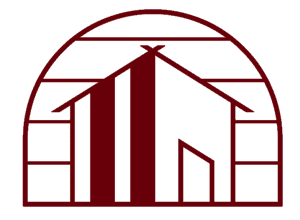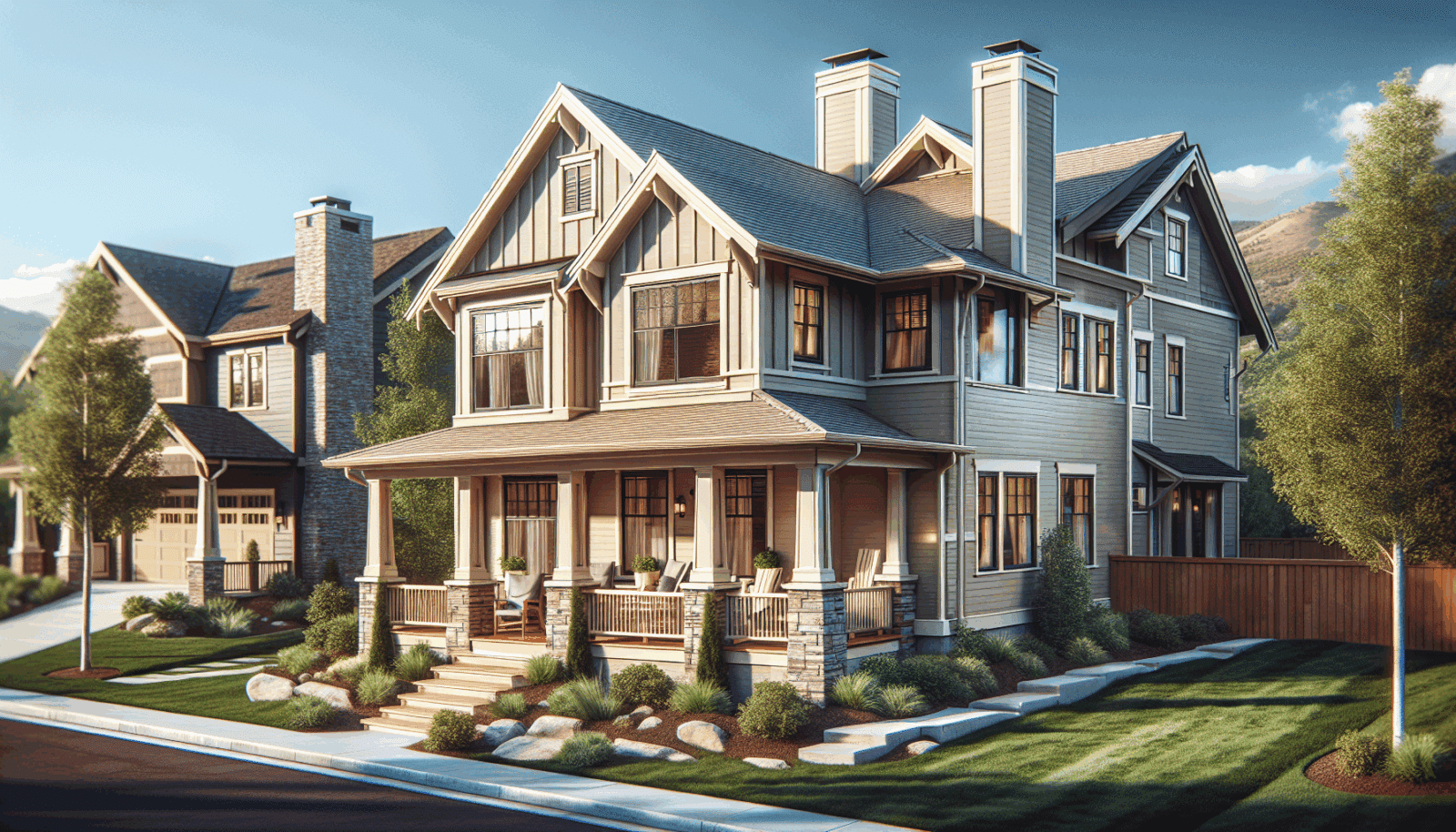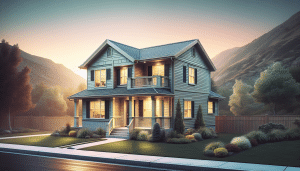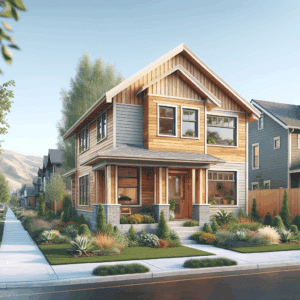Welcome to our exploration of a topic that’s as compelling as it is eco-friendly: the environmental impact of swapping stucco for siding. At Utah Siding & Exteriors, we aim to make your home not only beautiful but also environmentally responsible. This article will guide homeowners like you through the benefits of choosing siding over stucco, emphasizing sustainability. Through this, you’ll learn how making a simple switch can contribute to a greener planet and help create a home that’s as eco-conscious as it is stunning.
The Basics of Stucco
Stucco has long been a popular choice for exterior finishes. It’s a mixture of cement, sand, and water applied in layers, offering a unique texture and appearance for homes. Many appreciate its durability and the smooth, seamless look it gives to any structure.
However, stucco isn’t without its drawbacks. It’s labor-intensive, resulting in high installation costs. Plus, its production process can be harmful to the environment, as it involves significant energy expenditure and CO2 emissions. These factors make it a less sustainable option compared to siding, which we will explore further.
Understanding Siding
Siding, on the other hand, is an exterior material applied to the outer walls of a house. It’s much like putting a jacket on your home; it shields against the elements while offering a wide range of styles and colors. From vinyl to wood and fiber cement, siding options vary greatly in terms of aesthetics and functionality.
Not only is siding relatively easy to install, but it also offers improved insulation and energy efficiency. This means you can expect lower heating and cooling bills, making siding a win-win for both your wallet and the environment. The wide array of materials, colors, and textures allows homeowners nearly unlimited opportunities for creativity and customization.
The Environmental Impact of Stucco
Stucco may initially seem like a solid choice due to its durability; however, its environmental impact can’t be ignored. The production process for stucco requires significant energy use and emits a considerable amount of carbon dioxide. This contributes to the greenhouse effect, impacting our planet’s climate.
Additionally, stucco isn’t particularly efficient at insulating homes, leading to higher energy consumption. This means homeowners often need to use more heating and cooling throughout the year, further increasing their carbon footprint.
Why Siding is More Eco-friendly
Siding holds several environmental advantages over stucco. One of the most significant benefits is its ability to provide superior insulation, keeping homes naturally warmer in the winter and cooler in the summer. This feature reduces the need for artificial temperature control, thereby saving energy.
Moreover, many siding materials are recyclable, minimizing their impact on landfills. They also typically have a longer lifecycle than stucco, reducing the need for frequent replacements. All these factors make siding a greener choice, aligning with the sustainability goals many modern homeowners aim to achieve.
Durability and Lifespan
Stucco’s Lifespan may seem impressive, often lasting 50 to 80 years with proper maintenance, but it is susceptible to cracking and damage from ground shifts and weather extremes. Siding Options like vinyl and fiber cement can also last just as long, up to 50 years, with much less maintenance required to keep them looking fresh. Maintenance Requirements for siding are typically lower than those for stucco, which can develop cracks that require regular inspections and repairs. Climate Considerations also highlight the benefits of siding, as it performs better in a variety of climates and is more resistant to the freeze-thaw cycles that can devastate stucco. Long-term Financial Benefits are evident as well, as siding’s low maintenance and repair costs over time can lead to savings, making it an economically savvy investment.
Aesthetic Flexibility
When it comes to curb appeal, siding offers unmatched versatility. The range of styles, textures, and colors is practically limitless, giving homeowners the opportunity to express their personal taste. This level of customization can hugely enhance a property’s aesthetic and resale value.
While stucco does offer a distinct appearance, it lacks the ability to offer the same variation as siding. With siding, you can achieve the look of wood, stone, and more without the associated maintenance. This flexibility makes siding the better choice for those desiring both style and practicality.
Cost Efficiency
Switching from stucco to siding might initially seem costly; however, over time, siding proves to be the more economical choice. Its superior energy efficiency translates to lower utility bills, quickly offsetting any initial expenditures. Additionally, the reduced need for maintenance and repair costs means long-term savings for homeowners.
The installation process for siding is also generally quicker and less labor-intensive than stucco, which often involves more hefty labor charges. With siding, you not only invest in a home that looks great but also reduces your household’s environmental impact while keeping financial expenditure in check.
How Utah Siding & Exteriors Can Help
At Utah Siding & Exteriors, we’re committed to helping you make sustainable, cost-effective, and beautiful choices for your home. Our team of experts is here to guide you through the process of switching from stucco to siding, ensuring a seamless transition.
We understand how important it is to choose the right materials and styles that not only enhance your home’s appearance but also improve its energy efficiency and environmental impact. Trust us to be your partner in creating a home you can be proud of for generations to come.
Get in Touch
Ready to make the swap to siding? Contact us today for personalized guidance and professional installation services that prioritize quality and sustainability. Call us at 801-509-9241 or Request a Free Quote.




